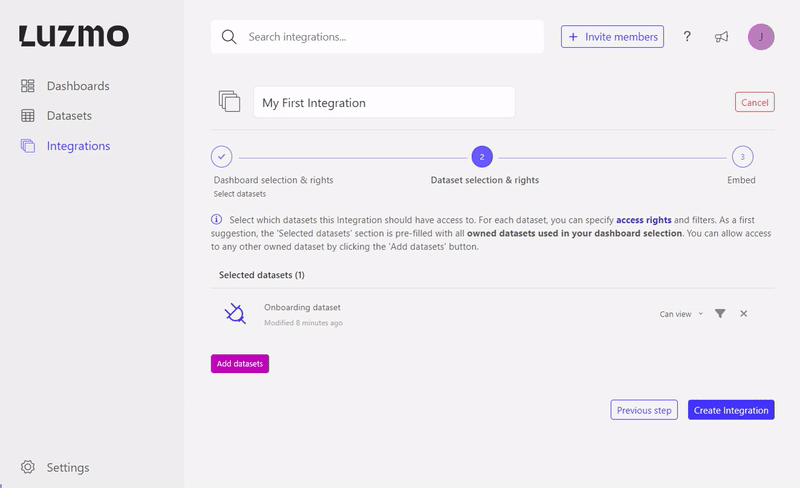Associate (filtered) datasets with Integration
As dashboards are powered by datasets, it's important to also associate the underlying datasets with the Integration. That way, SSO users that have access to a specific integration also have (scoped) access to the datasets used. All datasets used in the dashboards selected in the previous step will be selected by default to avoid "No access" errors when integrating.
In case of a multi-tenant dataset (i.e. containing rows from multiple clients) do not forget to apply the relevant filters on it (more on this below)!
Keep in mind that in order to associate a dataset with an Integration, you should be owner of the dataset as well as the Integration.

When associating datasets with an Integration you have to specify the access rights and optionally add filters.
The access right specifies what the user can do with the dataset:
- 'Can view' - gives an end user the right to query the dataset, but only queries that are used in charts of dashboards that are accessible to the end user.
- 'Can use' - next to having chart query access, the end user is able to query the dataset using e.g. our Alerting feature, from within newly created dashboards, etc. They are allowed to create their own queries on the dataset.
- 'Can edit' - next to being able to view and use a dataset, the end user can edit this dataset, i.e. add derived columns, define hierarchies, ...
Important! Don't forget to apply (parameterized) filters in case your multi-tenant data setup requires row-level filtering to be applied! Parameterizable filters can be used to dynamically apply these filters by overriding the parameter(s) when requesting a SSO token for your end-user. Instead of using parameterizable filters, you could also specify static filters when associating a dataset with an Integration.
Now that we've got our dashboards and datasets associated with the Integration the initial Integration setup is done and we can move to the next article, which covers how you should implement the SSO authorization request in your backend to grant access to a certain Integration!